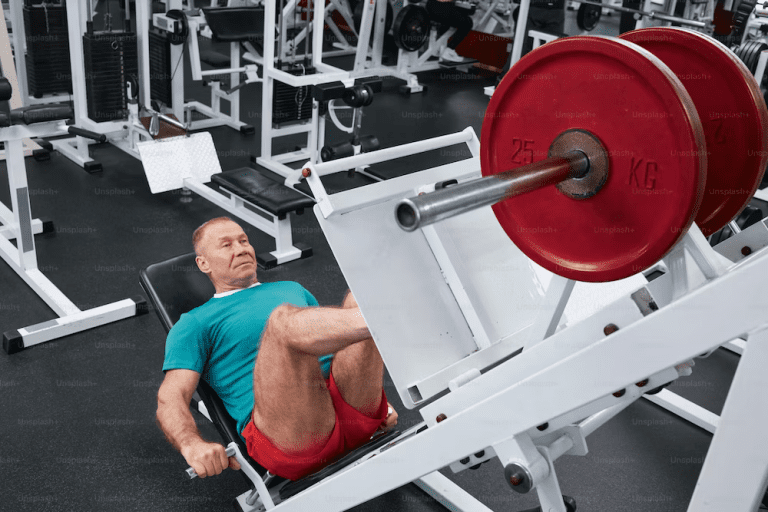The Benefits of Bench and Squat Same Day Workouts
Time-Efficient Workout
One of the main benefits of combining bench and squat on the same day is that it can save you time. For those with busy schedules, finding enough time to hit the gym can be challenging. If you only have two or three days per week to exercise, combining these compound movements can help you maximize your training sessions and ensure you target all major muscle groups during your limited gym time.
Balanced Muscle Development
By performing bench and squat exercises on the same day, you ensure that both your upper and lower body receive equal attention. This can lead to more balanced muscle development, as you’re not prioritizing one muscle group over another. It’s essential to maintain a balanced physique, as neglecting certain muscle groups can lead to muscle imbalances and increase the risk of injuries.
The Drawbacks of Bench and Squat Same Day Workouts
Central Nervous System Fatigue
Bench press and squats are both compound exercises that require the activation of multiple muscle groups and joints. As a result, they can be quite taxing on your Central Nervous System (CNS). Performing these exercises on the same day can lead to CNS fatigue, which may negatively impact your performance during the workout and hinder your progress over time.
Reduced Performance in Subsequent Exercises
As mentioned earlier, compound exercises like bench and squat are demanding on your muscles and CNS. If you perform one of these exercises first, your energy levels may be depleted by the time you move on to the second exercise. This can lead to a decrease in performance and may hinder your ability to lift heavy weights or complete the desired number of repetitions.
Strategies for Bench and Squat Same-Day Workouts
Prioritize Your Goals
Before deciding to combine bench and squat on the same day, it’s essential to determine your primary fitness goals. Are you looking to build strength, increase muscle mass, or improve overall fitness? Your goals will dictate whether combining these exercises in one workout session is the best approach for you.
Choose the Right Exercise Order
If you decide to perform bench and squat on the same day, the order in which you perform these exercises can significantly impact your workout’s effectiveness. In general, it’s recommended to start with squats before bench press. Squats are more demanding on your body and require more energy, so it’s best to perform them when you’re fresh. By doing squats first, you’ll have more energy to perform bench press effectively, leading to better overall workout performance.
Manage Volume and Intensity
When combining bench and squat in a single workout, it’s crucial to manage your training volume and intensity carefully. Performing too many sets or repetitions can lead to overtraining and increased risk of injury. As a general guideline, beginners should aim for 3-5 sets of each exercise, while more advanced lifters can experiment with higher volume depending on their goals and experience.
Proper Rest and Recovery
Ensuring adequate rest and recovery is crucial when performing bench and squat on the same day. Your muscles need time to repair and grow, so it’s important to allow 48-72 hours of rest between workouts targeting the same muscle groups. In addition, maintaining a well-balanced diet high in protein can help promote faster recovery and support muscle growth.
Alternatives to Bench and Squat Same Day Workouts
If you find that combining bench and squat on the same day is not suitable for your goals or preferences, there are several alternatives to consider:
Upper/Lower Body Split
One popular alternative to performing bench and squat on the same day is to adopt an upper/lower body split. This training approach involves dedicating separate workout days to upper-body exercises (including bench press) and lower body exercises (such as squats). This allows you to focus on one muscle group at a time, potentially leading to better performance and results.
Full-Body Workouts
For those who prefer full-body workouts, you can still perform bench and squat exercises in the same session while incorporating other exercises that target different muscle groups. This can help balance your workouts and ensure that all major muscle groups are targeted during each training session.
Final Thoughts
Ultimately, the decision to perform bench and squat on the same day depends on your individual goals, preferences, and schedule. By carefully considering the pros and cons outlined in this article and implementing the strategies discussed, you can make the most of your workout routine and achieve your fitness goals.
Remember, consistency and proper technique are crucial for success in any fitness program. Whether you decide to combine bench and squat on the same day or perform them on separate days, focus on maintaining good form and gradually progressing in weight or repetitions to ensure continued progress and results.
Happy lifting!

